Infection control is essential for maintaining a safe and healthy work environment. It involves using protective measures to prevent the spread of infectious diseases, such as washing hands frequently, wearing masks or gloves when necessary, and sanitizing surfaces at regular intervals. As businesses resume operations amid the global pandemic, infection prevention has become an integral part of many organizations' safety protocols. This makes having copies of Infection Control Worksheet Forms on hand all the more important! In this blog post, we will discuss what these forms are used for and how they can help promote safer working conditions in your business today.
| Question | Answer |
|---|---|
| Form Name | Infection Control Worksheet Form |
| Form Length | 15 pages |
| Fillable? | No |
| Fillable fields | 0 |
| Avg. time to fill out | 3 min 45 sec |
| Other names | infection surveyor, hospital infection control survyor worksheet, infection control worksheet, cms cop infection control worksheet |
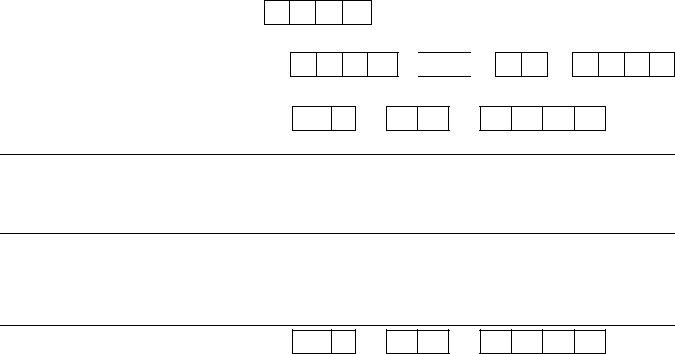
Attachment |
Exhibit 351 |
|
INFECTION CONTROL SURVEYOR WORKSHEET |
Name of State Agency or AO (please print at right) _________________________________________________
Instructions: The following is a list of items that must be assessed during the on‐site survey, in order to determine compliance with the infection control Condition for Coverage. Items are to be assessed primarily by surveyor observation, with interviews used to provide additional confirming evidence of observations. In some cases information gained from interviews may provide sufficient evidence to support a deficiency citation.
The interviews and observations should be performed with the most appropriate staff person(s) for the items of interest (e.g., the staff person responsible for sterilization should answer the sterilization questions).
A minimum of one surgical procedure must be observed during the site visit, unless the ASC is a low volume ASC with no procedures scheduled during the site visit. The surveyor(s) must identify at least one patient and follow that case from registration to discharge to observe pertinent practices. For facilities that perform brief procedures, e.g., colonoscopies, it is preferable to follow at least two cases.
When performing interviews and observations, any single instance of a breach in infection control would constitute a breach for that practice.
Citation instructions are provided throughout this instrument, indicating the applicable regulatory provision to be cited on the Form CMS‐2567 when deficient practices are observed.
PART 1 – ASC CHARACTERISTICS |
|
|
|
|
|
|
|
|
|
|
|
|||
1. ASC Name (please print) |
|
|
|
|
|
|
|
|
|
|
|
|||
2. Address, State and Zip Code |
|
|
|
|
|
|
|
|
|
|
|
|
|
|
|
|
|
|
|
|
|
|
|
|
|
|
|
|
|
|
|
|
|
|
Address |
|
|
|
|
|
|
|||
(please print) |
|
|
|
|
|
|
|
|
||||||
|
|
|
|
|
|
|
|
|
|
|
||||
|
|
|
|
|
|
|
|
|
|
|
|
|
|
|
|
|
City |
|
|
State |
|
|
Zip |
||||||
|
|
|
|
|
|
|
|
|
|
|
|
|
|
|
3. 10‐digit CMS Certification Number |
|
|
|
|
|
|
|
|
|
|
|
|
|
|
|
|
|
|
|
|
|
|
|
|
|
|
|
|
|
4.What year did the ASC open for operation?
5. Please list date(s) |
|
|
|
/ |
|
|
of site visit: |
m m |
|
d d |
|||
y y y y
/
y y y y
to m m
/
/
d d y y y y
6.What was the date of the most recent previous federal (CMS) survey:
/
m m
/
d d y y y y
PLEASE COMPLETELY FILL IN EACH BUBBLE USING A DARK PEN.
7. Does the ASC participate in Medicare via accredited “deemed” status? |
YES |
|
NO |
||
|
7a. If YES, by which CMS‐ recognized accreditation organization?
(Check only ONE):
Accreditation Association for Ambulatory Health Care (AAAHC)
American Associate for Accred. of Ambulatory Surgery Facilities (AAAASF)
American Osteopathic Association (AOA)
The Joint Commission (TJC)
7b. If YES, according to the ASC, what was the date of the most recent accreditation survey?
/
m m
/
d d y y y y
1 of 15

8. What is the ownership of the |
|
Physician‐owned |
|
facility? |
|
Hospital‐owned |
|
|
|||
|
National corporation (including joint ventures with physicians) |
||
|
|
|
|
|
Other (please print): |
|
|
|
|
|
|
9. What is the primary procedure performed at the |
10. What additional procedures are performed at the |
ASC (i.e., what procedure type reflects the majority of |
ASC? (Fill in all that apply) |
procedures performed at the ASC)? |
Do not include the procedure type indicated in |
(Fill in only ONE bubble) |
question 9. |
Dental
Endoscopy
Ear/Nose/Throat
OB/Gyn
Ophthalmologic
Orthopedic
Pain
Plastic/reconstructive
Podiatry
Other (please print):
Dental
Endoscopy
Ear/Nose/Throat
OB/Gyn
Ophthalmologic
Orthopedic
Pain
Plastic/reconstructive
Podiatry
Other (please print):
|
11. Who does the ASC perform |
|
Pediatric patients only |
|
|
|
|
|
|
|
|
|
|
|
||||
|
procedures on? |
|
Adult patients only |
|
|
|
|
|
|
|
|
|
|
|
|
|
||
|
(Fill in only ONE bubble) |
|
Both pediatric and adult patients |
|
|
|
|
|
|
|
|
|||||||
|
|
|
|
|
|
|
|
|
|
|
|
|
|
|
|
|
|
|
|
12. What is the average number of |
|
|
|
|
|
|
|
|
|
|
|
per month |
|
||||
|
procedures performed at the ASC |
|
|
|
|
|
|
|
|
|
|
|
|
|
||||
|
per month? |
|
|
|
|
|
|
|
|
|
|
|
|
|
|
|
|
|
|
|
|
|
|
|
|
|
|
|
|
|
|
|
|
|
|
||
|
13. How many Operating Rooms (including procedure |
|
|
|
|
|
|
|
|
|||||||||
|
rooms) does the ASC have? |
|
1 |
|
2 |
3 |
|
|
4 |
|
5 |
6 |
7 |
8 |
9+ |
|||
|
Number actively maintained: |
|
|
|
|
|
|
|
|
|
|
|||||||
|
|
1 |
|
2 |
3 |
|
|
4 |
|
5 |
6 |
7 |
8 |
9+ |
||||
|
|
|
|
|
|
|
|
|||||||||||
14. Please indicate how the following services are provided: (fill in all that apply) |
|
|
|
|
|
|
||||||||||||
|
|
|
Contract |
Employee |
Other |
|
|
|
|
|
If Other, Please print: |
|
||||||
|
|
|
|
|
|
|
|
|
|
|
|
|
|
|
|
|
||
Anesthesia |
|
|
|
|
|
|
|
|
|
|
|
|
|
|
|
|||
Environmental Cleaning |
|
|
|
|
|
|
|
|
|
|
|
|
|
|
|
|||
|
|
|
|
|
|
|
|
|
|
|
|
|||||||
Linen |
|
|
|
|
|
|
|
|
|
|
|
|
|
|
|
|||
|
|
|
|
|
|
|
|
|
|
|
|
|||||||
Nursing |
|
|
|
|
|
|
|
|
|
|
|
|
|
|
|
|||
|
|
|
|
|
|
|
|
|
|
|
|
|||||||
Pharmacy |
|
|
|
|
|
|
|
|
|
|
|
|
|
|
|
|||
|
|
|
|
|
|
|
|
|
|
|
|
|||||||
Sterilization/Reprocessing |
|
|
|
|
|
|
|
|
|
|
|
|
|
|
|
|||
|
|
|
|
|
|
|
|
|
|
|
|
|||||||
Waste Management |
|
|
|
|
|
|
|
|
|
|
|
|
|
|
|
|||
|
|
|
|
|
|
|
|
|
|
|
|
|||||||
|
|
|
|
|
|
|
|
|
|
|
|
|
|
|
|
|
|
|
|
|
|
|
|
|
|
|
|
|
|
|
|
|
|
|
|
2 of 15 |
|
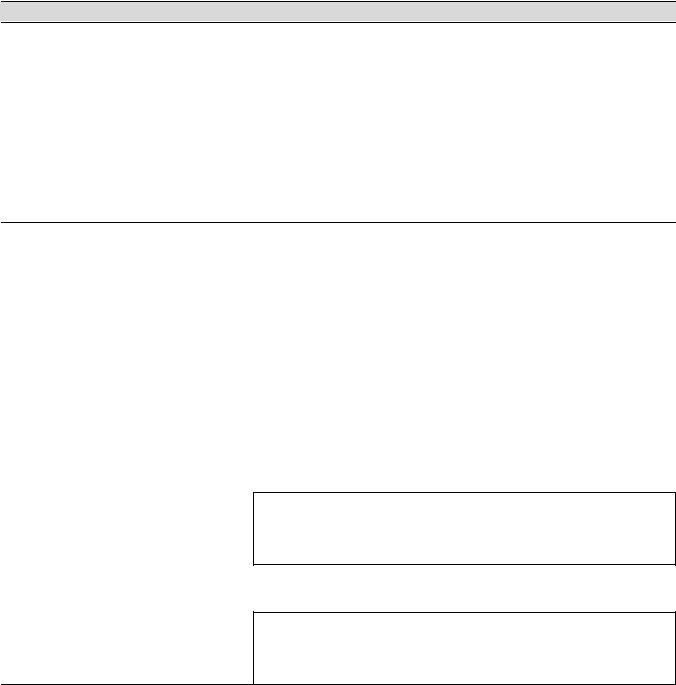
INFECTION CONTROL PROGRAM
15. Does the ASC have an explicit infection control program? |
YES |
|
NO |
||
|
NOTE! If the ASC does not have an explicit infection control program, a condition‐level deficiency related to 42 CFR 416.51 must be cited.
16. Does the ASC’s infection control program follow nationally recognized infection |
|
YES |
control guidelines? |
|
NO |
NOTE! If the ASC does not follow nationally recognized infection control guidelines, a deficiency related to 42 CFR 416.51(b) must be cited. Depending on the scope of the lack of compliance with national guidelines, a condition‐level citation may also be appropriate.
16a. Is there documentation that the ASC considered and selected nationally‐ |
YES |
|
recognized infection control guidelines for its program? |
NO |
|
|
|
|
|
|
|
16b. Which nationally‐ |
CDC/HICPAC Guidelines: |
|
recognized infection |
Guideline for Isolation Precautions (CDC/HICPAC) |
|
control guidelines has |
Hand hygiene (CDC/HICPAC) |
|
the ASC selected for its |
|
|
|
|
|
program? |
Disinfection and Sterilization in Healthcare Facilities (CDC/HICPAC) |
|
(Fill in all that apply) |
|
|
Environmental Infection Control in Healthcare Facilities (CDC/HICPAC) Perioperative Standards and Recommended Practices (AORN)
Guidelines issued by a specialty surgical society / organization (List)
Please specify (please print and limit to the space provided):
Others
Please specify (please print and limit to the space provided):
NOTE! If the ASC cannot document that it considered and selected specific guidelines for use in its infection control program, a deficiency related to 42 CFR 416.51(b) must be cited. This is the case even if the ASC’s infection control practices comply with generally accepted standards of practice/national guidelines. If the ASC neither selected any nationally recognized guidelines nor complies with generally accepted infection control standards of practice, then the ASC should be cited for a condition‐level deficiency related to 42 CFR 416.51.
3 of 15

17. Does the ASC have a licensed health care professional qualified through training YES
in infection control and designated to direct the ASC’s infection control program? |
NO |
|
NOTE! If the ASC cannot document that it has designated a qualified professional with training (not necessarily certification) in infection control to direct its infection control program, a deficiency related to 42 CFR 416.51(b)(1) must be cited. Lack of a designated professional responsible for infection control should be considered for citation of a condition‐level deficiency related to 42 CFR 416.51.
|
17a. If YES, Is this person an: |
|
|
|
ASC employee |
||||||
|
(Fill in only ONE bubble) |
|
|
|
ASC contractor |
||||||
|
|
|
|
|
|
|
|
|
|
|
|
|
|
|
|
|
|
|
YES |
||||
|
17b. Is this person certified in infection control (i.e., CIC) ( |
Note: §416.50(b)(1) |
|||||||||
|
does not require that the individual be certified in infection control. |
) |
NO |
||||||||
|
|
|
|
|
|
|
|
|
|
|
|
17c. If this person is NOT certified in |
|
|
|
|
|
|
|
|
|
|
|
infection control, what type of infection |
|
|
|
|
|
|
|
|
|
|
|
control training has this person received? |
|
|
|
|
|
|
|
|
|
|
|
|
17d. On average, how many hours per week |
|
|
|
hours per week |
||||||
|
|
|
|
||||||||
does this person spend in the ASC directing |
|
|
|
||||||||
the infection control program? |
|
|
|
|
|
|
|
|
|
||
|
|
|
|
|
|
|
|
|
|||
(Note: §416.51(b)(1) does not specify the amount of time the person must spend in the ASC directing the |
|
|
|||||||||
infection control program, but it is expected that the designated individual spends sufficient time on‐site |
|
|
|
||||||||
directing the program, taking into consideration the size of the ASC and the volume of its surgical activity. |
) |
||||||||||
18. Does the ASC have a system to actively identify infections that may have been |
YES |
||||||||||
related to procedures performed at the ASC? |
|
|
|
NO |
|||||||
18a. If YES, how does the ASC |
|
The ASC sends e‐mails to patients after discharge |
||
obtain this information? |
|
The ASC follows‐up with their patients’ primary care providers after |
||
(Fill in ALL that apply) |
||||
|
discharge |
|||
|
|
|||
|
The ASC relies on the physician performing the procedure to obtain |
|||
|
|
this information at a follow‐up visit after discharge, and report it to |
||
|
|
the ASC |
||
|
|
|
|
|
|
Other (please print): |
|
||
|
|
|
|
|
18b. Is there supporting documentation confirming this tracking activity? |
YES |
|
NO |
||
|
NOTE! If the ASC does not have an identification system, a deficiency related to 42 CFR 416.44(a)(3) and 42 CFR 416.51(b)(3) must be cited.
18c. Does the ASC have a policy/procedure in place to comply with State |
|
YES |
notifiable disease reporting requirements? |
|
NO |
NOTE! If the ASC does not have a reporting system, a deficiency must be cited related to 42 CFR 416.44(a)(3). CMS does not specify the means for reporting; generally this would be done by the State health agency.
4 of 15
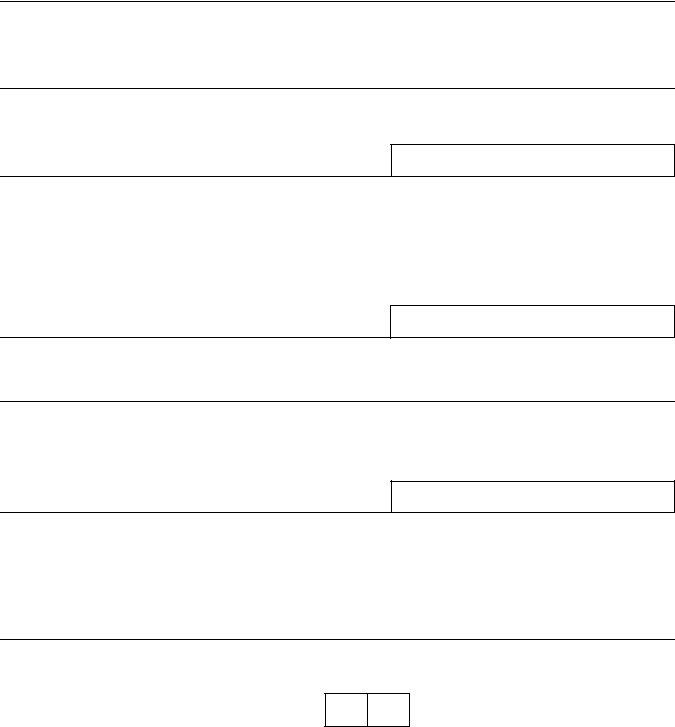
19. Do staff members receive infection control training? |
YES |
|
NO |
||
|
19a. If YES, how do they receive infection control training?
(Fill in all that apply)
In‐service
Computer‐based training
Other (please print):
19b. Which staff members receive infection control training?
(Fill in all that apply)
Medical staff
Nursing staff
Other staff providing direct patient care
Staff responsible for on‐site sterilization/high‐level disinfection
Cleaning staff
Other (please print):
19c. Is training: |
the same for all categories of staff |
|
|
|
different for different categories of staff |
19d. Indicate frequency of staff infection control training
(Fill in all that apply)
Upon hire
Annually
Periodically / as needed
Other (please print):
19e. Is there documentation confirming that training is provided to all |
|
YES |
categories of staff listed above? |
|
NO |
NOTE! If training is not provided to appropriate staff upon hire/granting of privileges, with some refresher training thereafter, a deficiency must by cited in relation to 42 CFR 416.51(b) and (b)(3). If training is completely absent, then consideration should be given to condition‐level citation in relation to 42 CFR 416.51, particularly when the ASC’s practices fail to comply with infection control standards of practice.
20. How many procedures were |
|
|
|
|
|
observed during the site visit? |
1 |
2 |
3 |
4 |
Other |
|
|
|
|
|
|
If other, please print the number:
procedures
5 of 15
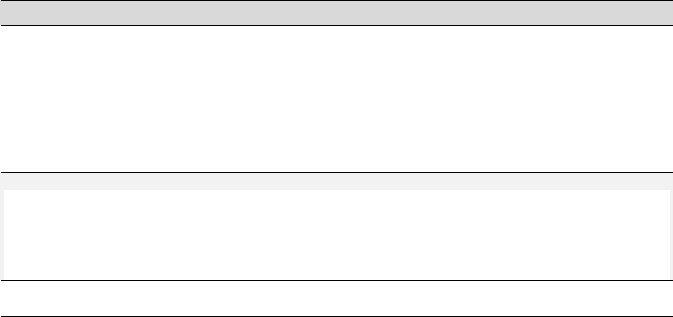
PART 2 – INFECTION CONTROL & RELATED PRACTICES
INSTRUCTIONS:
Please completely fill in ONE bubble for each “Was Practice Performed?” and “Manner of Confirmation” question, unless otherwise noted.
Please use a dark pen to fully fill in each bubble.
Unless otherwise indicated, a “No” response to any question below must be cited as a deficient practice in relation to 42 CFR 416.51(a).
If N/A is response, please explain why there is no associated observation, or why the question is not applicable, in the COMMENTS box at the end of each section.
I.Hand Hygiene
Observations are to focus on staff directly involved in patient are (e.g., physicians, nurses, CRNAs, etc.).
Hand hygiene should be observed not only during the case being followed, but also while making other observations in the ASC throughout the survey. Interviews are used primarily to provide additional evidence for what the surveyor has observed, but may in some cases substitute for direct observation to support a citation of deficient practice.
Practices to be Assessed
Was Practice Manner of Performed? Confirmation
A. All patient care areas have:
Note: 42 CFR 416.51(a) should be cited only if the answer to both a and b is “No.”
|
|
Yes |
|
Observation |
a. Soap and water available |
|
No |
|
Interview |
|
|
|
|
Both |
|
|
|
|
|
b. Alcohol‐based hand rubs available |
|
Yes |
|
Observation |
|
No |
|
Interview |
|
|
|
|
|
Both |
|
|
|
|
|
I. If alcohol‐based hand rub is available in patient care areas, it is |
|
Yes |
|
|
installed as required. (There are LSC requirements at 42 CFR |
|
No |
|
|
416.44(b)(5) for installation of alcohol‐based hand rubs) |
|
|
|
|
|
|
|
|
|
B. Staff perform hand hygiene: |
|
|
|
|
|
|
Yes |
|
Observation |
a. After removing gloves |
|
No |
|
Interview |
|
|
N/A |
|
Both |
|
|
|
|
|
|
|
Yes |
|
Observation |
b. After direct patient contact |
|
No |
|
Interview |
|
|
N/A |
|
Both |
|
|
|
|
|
|
|
Yes |
|
Observation |
c. Before performing invasive procedures (e.g., placing an IV) |
|
No |
|
Interview |
|
|
N/A |
|
Both |
6 of 15

Practices to be Assessed |
Was Practice |
Manner of |
|
|||
Performed? |
Confirmation |
|
||||
|
|
|
||||
d. After contact with blood, body fluids, or contaminated surfaces |
|
Yes |
|
Observation |
|
|
(even if gloves are worn) |
|
No |
|
Interview |
|
|
|
|
|
|
|
||
|
|
N/A |
Both |
|
||
|
|
|
|
|
|
|
C. Regarding gloves, staff: |
|
|
|
|
|
|
a. Wear gloves for procedures that might involve contact with blood |
|
Yes |
|
Observation |
|
|
or body fluids |
|
No |
|
Interview |
|
|
|
|
|
|
|
||
|
|
N/A |
Both |
|
||
|
|
|
|
|
|
|
b. Wear gloves when handling potentially contaminated patient |
|
Yes |
|
Observation |
|
|
|
|
|
|
|
||
equipment |
No |
Interview |
|
|||
|
|
|
|
|
||
|
|
N/A |
Both |
|
||
|
|
|
|
|
|
|
|
|
|
Yes |
|
Observation |
|
c. Remove gloves before moving to the next tasks and/or patient |
|
No |
|
Interview |
|
|
|
|
|
N/A |
|
Both |
|
|
|
|
|
|
|
|
D. Additional breaches in hand hygiene, not captured by the questions |
|
Yes |
|
Observation |
|
|
|
|
|
|
|
||
above, were identified (If YES, please specify further in comments) |
No |
Interview |
|
|||
|
|
|
|
|
||
|
|
N/A |
Both |
|
||
|
|
|
|
|
|
|
Comments: |
|
|
|
|
|
|
(please print and limit |
|
|
|
|
|
|
comments to the space |
|
|
|
|
|
|
provided) |
|
|
|
|
|
|
|
|
|
|
|
|
|
|
|
|
|
|
|
|
II.Injection Practices (injectable medications, saline, other infusates)
Observations are to be made of staff who prepare and administer medications and perform injections (e.g., anesthesiologists, certified registered nurse anesthetists, nurses).
Practices to be Assessed |
Was Practice |
Manner of |
|||
Performed? |
Confirmation |
||||
|
|||||
|
|
Yes |
|
Observation |
|
A. Needles are used for only one patient |
|
No |
|
Interview |
|
|
|
N/A |
|
Both |
|
|
|
|
|
|
|
|
|
Yes |
|
Observation |
|
B. Syringes are used for only one patient |
|
No |
|
Interview |
|
|
|
N/A |
|
Both |
|
|
|
|
|
|
|
7 of 15

Practices to be Assessed |
Was Practice |
Manner of |
|||
Performed? |
Confirmation |
||||
|
|||||
|
|
Yes |
|
Observation |
|
C. Medication vials are always entered with a new needle |
|
No |
|
Interview |
|
|
|
N/A |
|
Both |
|
|
|
|
|
|
|
|
|
Yes |
|
Observation |
|
D. Medication vials are always entered with a new syringe |
|
No |
|
Interview |
|
|
|
N/A |
|
Both |
|
|
|
|
|
|
|
E. Medications that are pre‐drawn are labeled with the time of draw, initials |
|
Yes |
|
Observation |
|
of the person drawing, medication name, strength and expiration date or |
|
No |
|
Interview |
|
time |
|
N/A |
|
Both |
|
Note: A “No” answer should result in citation as a deficient practice in relation to 42 CFR 416.48(a), Administration of Drugs
F. |
a. Single dose (single‐use) medication vials are used for only one |
|
Yes |
|
Observation |
|||
|
patient |
(A “No” response must be cited in relation to 42 CFR |
|
|
No |
|
Interview |
|
|
416.48(a).) |
|
|
N/A |
|
Both |
||
|
|
|
|
|
|
|
|
|
|
|
|
|
|
|
Yes |
|
Observation |
|
b. Manufactured prefilled syringes are used for only one patient |
|
No |
|
Interview |
|||
|
|
|
|
|
|
N/A |
|
Both |
|
|
|
|
|
|
|
|
|
|
|
|
|
|
|
Yes |
|
Observation |
|
c. Bags of IV solutions are used for only one patient |
|
No |
|
Interview |
|||
|
|
|
|
|
|
N/A |
|
Both |
|
|
|
|
|
|
|
|
|
|
d. Medication administration tubing and connectors are used for |
|
Yes |
|
Observation |
|||
|
|
|
|
|
||||
|
only one patient |
No |
Interview |
|||||
|
|
|
|
|
||||
|
|
|
|
|
N/A |
Both |
||
G. Please print all injectable medications/infusates that are in a vial/container used for more than one patient:
Name of Medication |
Average number of patients per vial/container |
|
|
|
|
|
|
|
|
|
|
|
|
|
|
|
|
|
|
8 of 15

Practices to be Assessed |
Was Practice |
Manner of |
|||
Performed? |
Confirmation |
||||
|
|||||
H. Multi‐dose injectable medications are used for only one patient |
|
Yes |
|
Observation |
|
|
|
No |
|
Interview |
|
|
|
N/A |
|
Both |
|
(Note: a “No” answer here is not necessarily a breach in infection control and does not result in a citation. However, a “No” response to the related questions I ‐ K should be cited).
(Fill in N/A if no multi‐dose medications/infusates are used).
If YES, please skip to “L”
If NO, please answer “I‐K”:
|
I. The rubber septum on a multi‐dose vial used for more than one patient |
|
Yes |
|
Observation |
|
|
is disinfected with alcohol prior to each entry |
|
No |
|
Interview |
|
|
|
|
|
|
||
|
|
|
N/A |
Both |
||
|
|
|
|
|
|
|
|
J. Multi‐dose medications used for more than one patient are dated when |
|
Yes |
|
Observation |
|
|
they are first opened and are discarded within 28 days of opening or |
|
No |
|
Interview |
|
|
according to manufacturer’s recommendations, whichever comes first |
|
N/A |
|
Both |
|
|
|
|
|
|
|
|
|
K. Multi‐dose medications, used for more than one patient, are not stored |
|
Yes |
|
Observation |
|
|
or accessed in the immediate areas where direct patient contact occurs |
|
No |
|
Interview |
|
|
|
|
|
|
||
|
|
|
N/A |
Both |
||
|
|
|
|
|
|
|
|
L. All sharps are disposed of in a puncture‐resistant sharps container |
|
Yes |
|
Observation |
|
|
|
No |
|
Interview |
||
|
|
|
|
N/A |
|
Both |
|
|
|
|
|
|
|
|
|
|
|
Yes |
|
Observation |
|
M. Sharps containers are replaced when the fill line is reached |
|
No |
|
Interview |
|
|
|
|
|
N/A |
|
Both |
|
|
|
|
|
|
|
|
N. Additional breaches in injection practices, not captured by the questions |
|
Yes |
|
Observation |
|
|
above were identified (If YES, please specify further in comments) |
|
No |
|
Interview |
|
|
|
|
|
|
||
|
|
|
N/A |
Both |
||
|
|
|
|
|
|
|
|
Comments: |
|
|
|
|
|
|
(please print and limit |
|
|
|
|
|
|
comments to the |
|
|
|
|
|
|
space provided) |
|
|
|
|
|
|
|
|
|
|
|
|
9 of 15

III.Single Use Devices, Sterilization, and High Level Disinfection
Pre‐cleaning must always be performed prior to sterilization and high‐level disinfection
Sterilization must be performed for critical equipment (i.e., instruments and equipment that enter normally sterile tissue or the vascular system, such as surgical instruments)
High‐level disinfection must be performed for semi‐critical equipment (i.e., items that come into contact with non‐intact skin or mucous membranes such as reusable flexible endoscopes, laryngoscope blades)
Observations are to be made of staff who perform equipment reprocessing (e.g., surgical techs), unless these activities are performed under contract or arrangement off‐site from the ASC.
SINGLE‐USE DEVICES
(Choose N/A if single‐use devices are never reprocessed and used again)
(Surveyor to confirm there is a contract or other documentation of an arrangement with a reprocessing facility by viewing it)
Practices to be Assessed |
Was Practice |
Manner of |
||||
Performed? |
Confirmation |
|||||
|
|
|||||
|
|
|
|
|
|
|
A. |
a. If single‐use devices are reprocessed, they are devices that are |
|
Yes |
|
Observation |
|
|
approved by the FDA for reprocessing |
|
No |
|
Interview |
|
|
|
|
N/A |
|
Both |
|
|
|
|
|
|
|
|
|
b. If single‐use devices are reprocessed, they are reprocessed by an |
|
Yes |
|
Observation |
|
|
FDA‐approved reprocessor. |
|
No |
|
Interview |
|
|
|
|
N/A |
|
Both |
|
|
|
|
|
|
|
|
|
STERILIZATION |
|
|
|
|
|
|
|
|
|
|
|
|
|
|
|
Yes |
|
Observation |
|
A. Critical equipment is sterilized |
|
No |
|
Interview |
||
|
|
|
N/A |
|
Both |
|
|
|
|
|
|
||
B. Are sterilization procedures performed on‐site? |
|
Yes |
|
Observation |
||
(If NO, skip to “F”) |
|
No |
|
Interview |
||
|
|
|
N/A |
|
Both |
|
(A “No” answer does not result in a citation, since ASCs are permitted to provide for sterilization off‐site, under a contractual arrangement.)
(Surveyor to confirm there is a contract or other documentation of an arrangement for off‐site sterilization by viewing it)
a. If YES to B, please indicate method of sterilization:
Steam autoclave
Peracetic acid
Other (please print):
C. Items are pre‐cleaned according to manufacturer’s instructions or |
|
Yes |
|
Observation |
|
|
|
|
|
evidence‐based guidelines prior to sterilization |
No |
Interview |
||
|
|
N/A |
|
Both |
|
|
|
|
|
|
|
|
|
10 of 15 |

Practices to be Assessed |
Was Practice |
Manner of |
|||||
Performed? |
Confirmation |
||||||
|
|
|
|||||
D. |
|
Yes |
|
Observation |
|||
|
a. Medical devices and instruments are visually inspected for residual |
No |
|
Interview |
|||
|
soil and re‐cleaned as needed before packaging and sterilization |
|
N/A |
|
Both |
||
|
|
|
|
|
|
|
|
|
|
|
|
Yes |
|
Observation |
|
|
b. A chemical indicator is placed in each load |
|
No |
|
Interview |
||
|
|
|
|
N/A |
|
Both |
|
|
|
|
|
Yes |
|
Observation |
|
|
c. A biologic indicator is performed at least weekly and with all |
|
No |
|
Interview |
||
|
implantable loads |
|
N/A |
|
Both |
||
|
|
|
|
|
|
|
|
|
|
|
|
Yes |
|
Observation |
|
|
d. Each load is monitored with mechanical indicators (e.g. time, |
|
No |
|
Interview |
||
|
temperature, pressure) |
|
N/A |
|
Both |
||
|
|
|
|
|
|
|
|
|
|
|
|
Yes |
|
Observation |
|
|
e. Documentation for each piece of sterilization equipment is |
|
No |
|
Interview |
||
|
maintained and up to date and includes results from each load |
|
N/A |
|
Both |
||
|
|
|
|
|
|
|
|
|
|
|
|
Yes |
|
Observation |
|
|
E. Items are appropriately contained and handled during the sterilization |
|
No |
|
Interview |
||
|
process to assure that sterility is not compromised prior to use |
|
N/A |
|
Both |
||
|
|
|
|
|
|
|
|
|
|
|
|
Yes |
|
Observation |
|
|
F. After sterilization, medical devices and instruments are stored in a |
|
No |
|
Interview |
||
|
designated clean area so that sterility is not compromised |
|
N/A |
|
Both |
||
|
|
|
|
|
|
|
|
|
|
|
|
Yes |
|
Observation |
|
|
G. Sterile packages are inspected for integrity and compromised packages |
|
No |
|
Interview |
||
|
are reprocessed |
|
N/A |
|
Both |
||
|
|
|
|
|
|
|
|
|
|
|
|
Yes |
|
Observation |
|
|
H. Additional breaches in sterilization practices not captured by the |
|
No |
|
Interview |
||
|
questions above were identified (If YES, please specify further in comments) |
|
N/A |
|
Both |
||
|
|
|
|
|
|
|
|
Comments: |
|
|
|
|
|
||
(please print and limit |
|
|
|
|
|
||
comments to the space |
|
|
|
|
|
||
provided) |
|
|
|
|
|
||
|
|
|
|
|
|
|
|
|
|
HIGH‐LEVEL DISINFECTION |
|
|
|
|
|
|
|
|
|
|
|
|
|
11 of 15

Practices to be Assessed |
Was Practice |
Manner of |
|||
Performed? |
Confirmation |
||||
|
|||||
A. Semi‐critical equipment is high‐level disinfected or sterilized |
|
Yes |
|
Observation |
|
|
No |
|
Interview |
||
|
|
N/A |
|
Both |
|
|
|
|
|
|
|
B. Is high‐level disinfection performed on site? |
|
Yes |
|
Observation |
|
|
|
|
|
||
(If NO, Skip to “F”) |
No |
Interview |
|||
|
|
|
|
||
|
N/A |
Both |
|||
(A “No” answer does not result in a citation, since ASCs are permitted to provide for high‐level disinfection off‐ site, under a contractual arrangement.)
(Surveyor to confirm there is a contract or other documentation of an arrangement for off‐site sterilization by viewing it)
a. If answer to B was YES, please indicate method of high‐level disinfection:
Manual
Automated
Other (please print):
C. Items are pre‐cleaned according to manufacturer’s instructions or |
|
Yes |
|
Observation |
|
|
|
|
|
||
evidence‐based guidelines prior to high‐level disinfection |
No |
Interview |
|||
|
|
|
N/A |
|
Both |
|
|
|
|
|
|
D. |
a. Medical devices and instruments are visually inspected for |
|
Yes |
|
Observation |
|
residual soil and re‐cleaned as needed before high‐level |
|
No |
|
Interview |
|
disinfection |
|
N/A |
|
Both |
|
|
|
|
|
|
|
b. High‐level disinfection equipment is maintained according to |
|
Yes |
|
Observation |
|
|
|
|
|
|
|
manufacturer instructions |
No |
Interview |
||
|
|
|
|
|
|
|
|
N/A |
Both |
||
|
|
|
|
|
|
|
c. Chemicals used for high‐level disinfection are: |
|
|
|
|
|
|
|
Yes |
|
Observation |
|
I. Prepared according to manufacturer instructions |
|
No |
|
Interview |
|
|
|
N/A |
|
Both |
|
|
|
|
|
|
|
II. Tested for appropriate concentration according to |
|
Yes |
|
Observation |
|
|
|
|
|
|
|
manufacturer’s instructions |
No |
Interview |
||
|
|
|
|
|
|
|
|
N/A |
Both |
||
|
|
|
|
|
|
|
|
|
Yes |
|
Observation |
|
III. Replaced according to manufacturer’s instructions |
|
No |
|
Interview |
|
|
|
N/A |
|
Both |
|
|
|
|
|
|
12 of 15
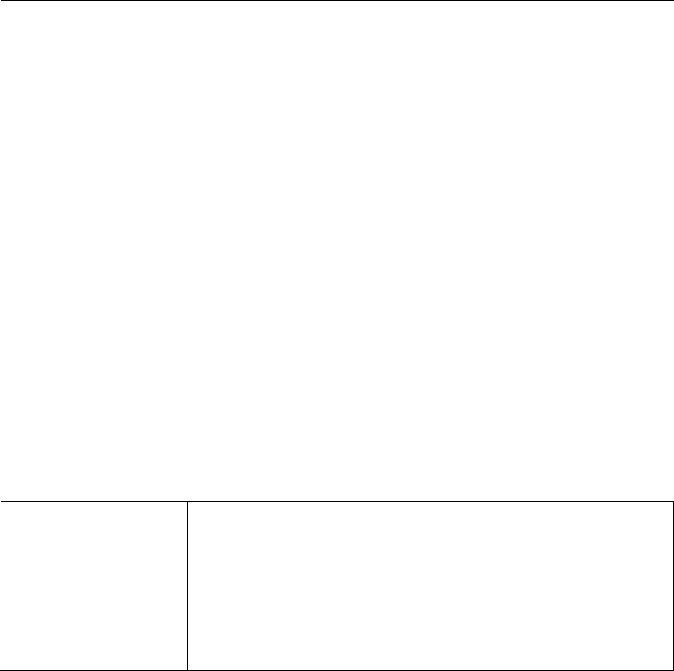
Practices to be Assessed |
Was Practice |
Manner of |
|||
Performed? |
Confirmation |
||||
|
|||||
IV. Documented to have been prepared and replaced |
|
Yes |
|
Observation |
|
|
|
|
|
||
according to manufacturer’s instructions |
No |
Interview |
|||
|
|
|
|
||
|
N/A |
Both |
|||
|
|
|
|
|
|
d. Instruments requiring high‐level disinfection are: |
|
|
|
|
|
I. Disinfected for the appropriate length of time as specified |
|
Yes |
|
Observation |
|
by manufacturer’s instructions or evidence‐based guidelines |
|
No |
|
Interview |
|
|
|
N/A |
|
Both |
|
|
|
|
|
|
|
II. Disinfected at the appropriate temperature as specified by |
|
Yes |
|
Observation |
|
manufacturer’s instructions on evidence‐based guidelines |
|
No |
|
Interview |
|
|
|
N/A |
|
Both |
|
|
|
|
|
|
|
E. Items that undergo high‐level disinfection are allowed to dry before use |
|
Yes |
|
Observation |
|
|
No |
|
Interview |
||
|
|
N/A |
|
Both |
|
|
|
|
|
|
|
F. Following high‐level disinfection, items are stored in a designated clean |
|
Yes |
|
Observation |
|
area in a manner to prevent contamination |
|
No |
|
Interview |
|
|
|
|
|
||
|
N/A |
Both |
|||
|
|
|
|
|
|
G. Additional breaches in high‐level disinfection practices, not captured by |
|
Yes |
|
Observation |
|
the questions above were identified (If YES, please specify further in |
|
No |
|
Interview |
|
comments) |
|
N/A |
|
Both |
|
Comments:
(please print and limit comments to the space provided)
13 of 15
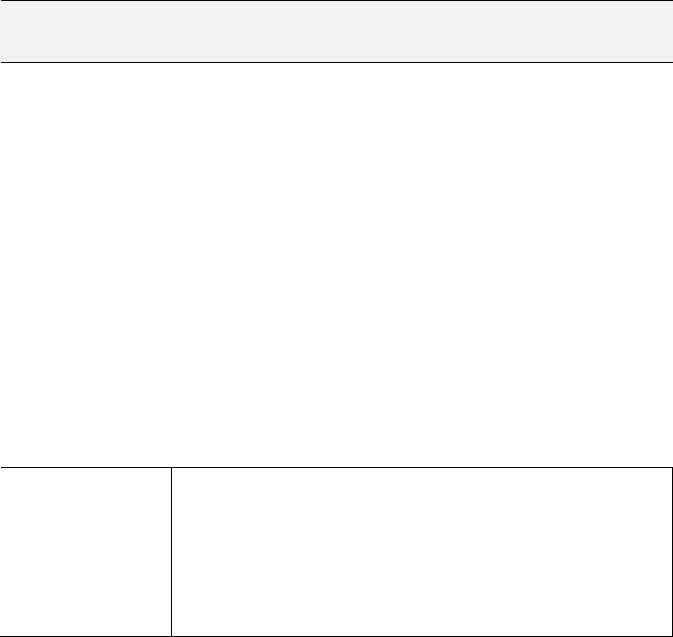
IV. Environmental Infection Control
Observations are to be made of staff who perform environmental cleaning (e.g., surgical technicians, cleaning staff, etc.)
Practices to be Assessed |
Was Practice |
Manner of |
|||
Performed? |
Confirmation |
||||
|
|||||
|
|
|
|
|
|
A. Operating rooms are cleaned and disinfected after each surgical or |
|
Yes |
|
Observation |
|
|
|
|
|
||
invasive procedure with an EPA‐registered disinfectant |
No |
Interview |
|||
|
|
N/A |
|
Both |
|
|
|
|
|
|
|
|
|
Yes |
|
Observation |
|
B. Operating rooms are terminally cleaned daily |
|
No |
|
Interview |
|
|
|
N/A |
|
Both |
|
|
|
|
|
|
|
C. High‐touch surfaces in patient care areas are cleaned and disinfected with |
|
Yes |
|
Observation |
|
an EPA‐registered disinfectant |
|
No |
|
Interview |
|
|
|
N/A |
|
Both |
|
|
|
|
|
|
|
|
|
Yes |
|
Observation |
|
D. The ASC has a procedure in place to decontaminate gross spills of blood |
|
No |
|
Interview |
|
|
|
N/A |
|
Both |
|
|
|
|
|
|
|
E. Additional breaches in environmental cleaning not captured by the |
|
Yes |
|
Observation |
|
|
|
|
|
||
questions above were identified (If YES, please specify further in comments) |
No |
Interview |
|||
|
|
N/A |
|
Both |
|
Comments:
(please print and limit comments to the space provided)
14 of 15

V.Point of Care Devices (e.g., blood glucose meter)
Observations are to be made of staff who perform fingerstick testing (e.g., nurses)
If N/A is filled in, please clarify why in the comments box below why it was not applicable or not observed.
Practices to be Assessed |
Was Practice |
Manner of |
|||
Performed? |
Confirmation |
||||
|
|||||
|
|
|
|
|
|
1. Does the ASC have a blood glucose meter? |
|
Yes |
|
Observation |
|
|
|
|
|
||
If NO, STOP HERE. |
No |
Interview |
|||
|
|
|
|
||
|
N/A |
Both |
|||
|
|
|
|
|
|
A. A new single‐use, auto‐disabling lancing device is used for each patient |
|
Yes |
|
Observation |
|
|
No |
|
Interview |
||
|
|
N/A |
|
Both |
|
|
|
|
|
|
|
B. The glucose meter is not used on more than one patient unless the |
|
Yes |
|
Observation |
|
|
|
|
|
||
manufacturer’s instructions indicate this is permissible |
No |
Interview |
|||
|
|
|
|
||
|
N/A |
Both |
|||
|
|
|
|
|
|
|
|
Yes |
|
Observation |
|
C. The glucose meter is cleaned and disinfected after every use. |
|
No |
|
Interview |
|
|
|
N/A |
|
Both |
|
|
|
|
|
|
|
D. Additional breaches in appropriate use of point of care devices (like |
|
Yes |
|
Observation |
|
glucose meters) not captured by the questions above were identified |
|
No |
|
Interview |
|
(If YES, please specify further in comments) |
|
N/A |
|
Both |
|
Comments:
(please print and limit comments to the space provided)
15 of 15